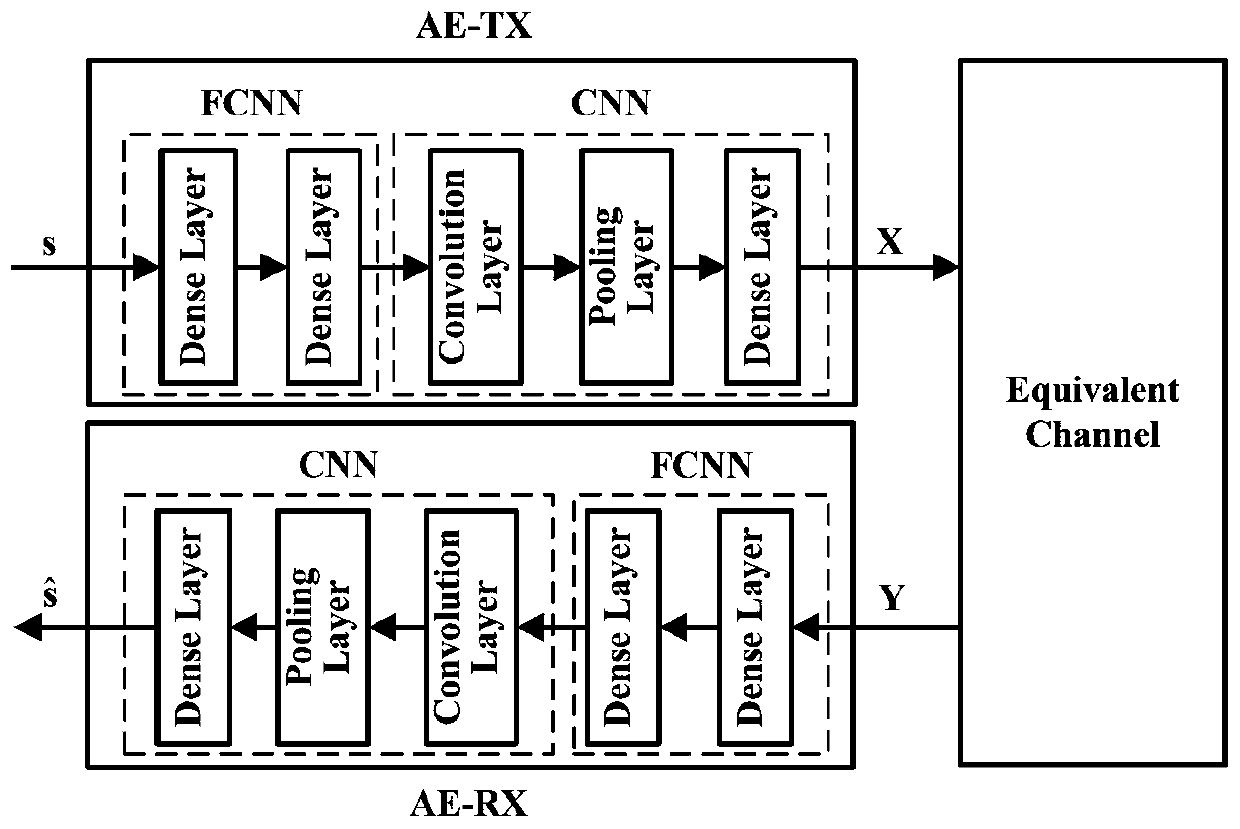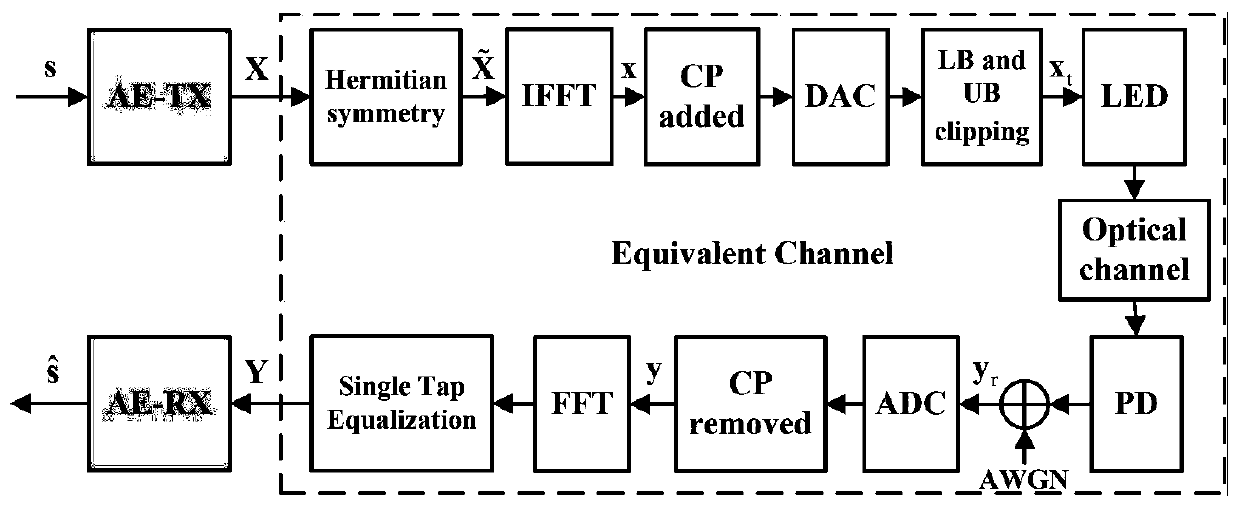Optical orthogonal frequency division multiplexing modulation method and system based on deep learning
An orthogonal frequency division and deep learning technology, applied in the field of visible light communication, can solve problems such as ineffective technical effects, PAPR method cannot be used directly, and high complexity
- Summary
- Abstract
- Description
- Claims
- Application Information
AI Technical Summary
Problems solved by technology
Method used
Image
Examples
Embodiment 1
[0094] Such as figure 1 As shown, the optical orthogonal frequency division multiplexing modulation method DL-OOFDM based on deep learning includes the signal transmission process and the signal reception process, including the following steps:
[0095] S1: Construct and train an autoencoder (AE) with a neural network (NN) structure, including the autoencoder transmitter AE-TX and the autoencoder receiver AE-RX;
[0096] S2: The signal transmitter inputs the signal to be sent into the autoencoder transmitter AE-TX for signal preprocessing to obtain the preprocessed signal;
[0097] S3: Perform OFDM modulation on the preprocessed signal, and transmit the obtained positive real modulated signal through the VLC channel to complete the signal transmission process;
[0098] S4: The signal receiving end receives the modulated signal through the VLC channel and performs OFDM demodulation to obtain the OFDM demodulated signal;
[0099] S5: Input the OFDM demodulated signal into the au...
Embodiment 2
[0138] More specifically, on the basis of Example 1, such as image 3 As shown, the optical OFDM modulation system based on deep learning includes the autoencoder transmitter AE-TX, the autoencoder receiver AE-RX and the equivalent channel module; where:
[0139] The automatic encoder transmitting end AE-TX has a neural network structure, which is used for preprocessing the signal to be sent to obtain the preprocessed signal, which can make the OFDM modulated signal have non-negative characteristics;
[0140] After the equivalent channel module receives the preprocessing signal sent by the autoencoder transmitter AE-TX, it performs OFDM modulation, VLC signal transmission and OFDM demodulation processing to obtain an OFDM demodulation signal;
[0141] The receiving end AE-RX of the automatic encoder has a neural network structure, demodulates the OFDM demodulated signal, and restores the signal to be sent.
[0142] More specifically, the autoencoder transmitting end and the aut...
Embodiment 3
[0170] In the specific implementation process, fully connected neural network (Fully Connected Neural Network, FCNN) and convolutional neural network (Convolution Neural Network, CNN) structures are often used in deep learning models. FCNN is a network mainly composed of multi-layer fully connected layers cascaded, and is the simplest and most typical neural network structure. CNN is a network mainly composed of convolutional layers, pooling layers, and fully connected layers. It has a large number of applications in image recognition, object detection, and other fields [15]. CNN can be used to extract signal features, or correlation characteristics between adjacent signals. Therefore, in OFDM modulation, CNN can be used to extract the connection between each subcarrier, and through learning to coordinate the input of each subcarrier, the output OFDM signal can meet certain constraints we need. At the same time, due to the characteristic of sparse connection, CNN can greatly ...
PUM
 Login to View More
Login to View More Abstract
Description
Claims
Application Information
 Login to View More
Login to View More - R&D
- Intellectual Property
- Life Sciences
- Materials
- Tech Scout
- Unparalleled Data Quality
- Higher Quality Content
- 60% Fewer Hallucinations
Browse by: Latest US Patents, China's latest patents, Technical Efficacy Thesaurus, Application Domain, Technology Topic, Popular Technical Reports.
© 2025 PatSnap. All rights reserved.Legal|Privacy policy|Modern Slavery Act Transparency Statement|Sitemap|About US| Contact US: help@patsnap.com



